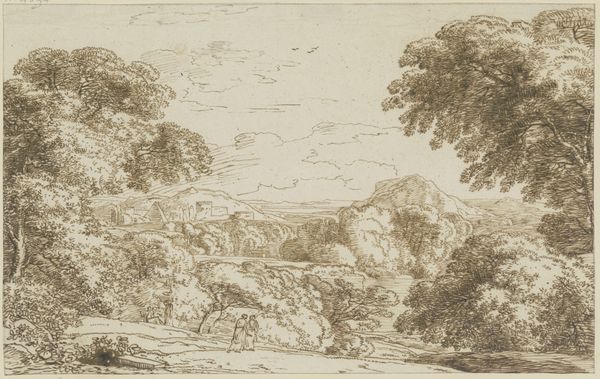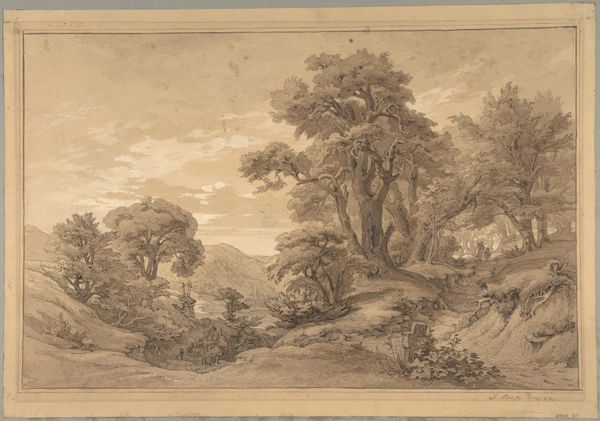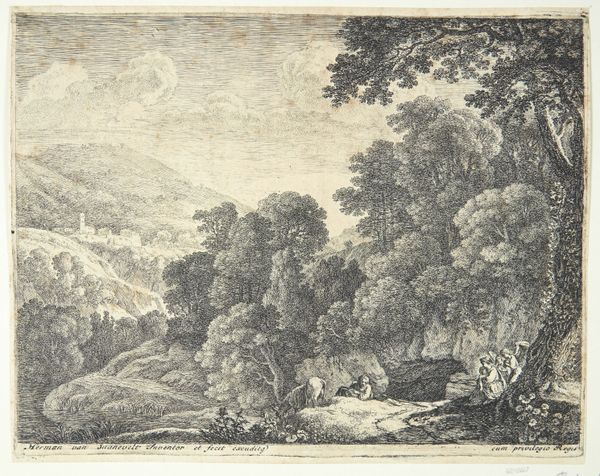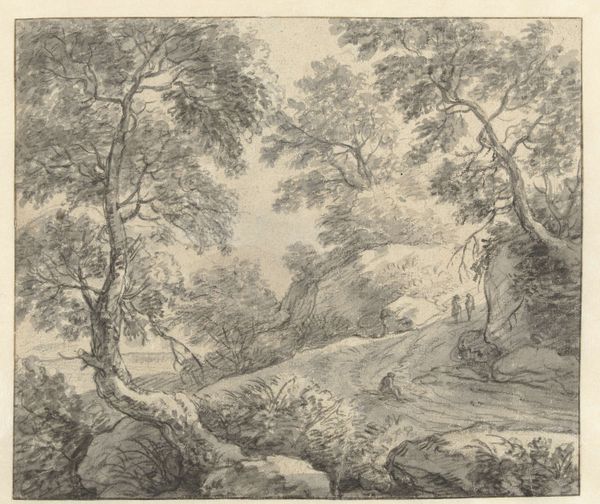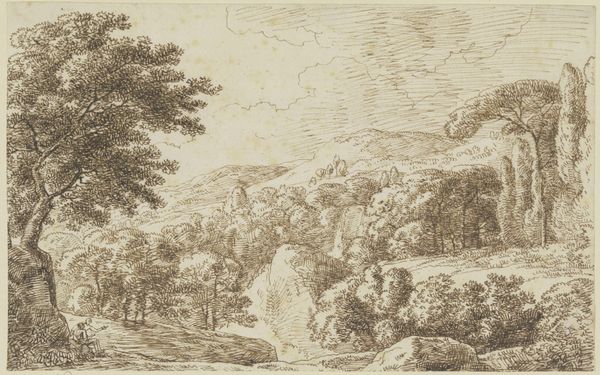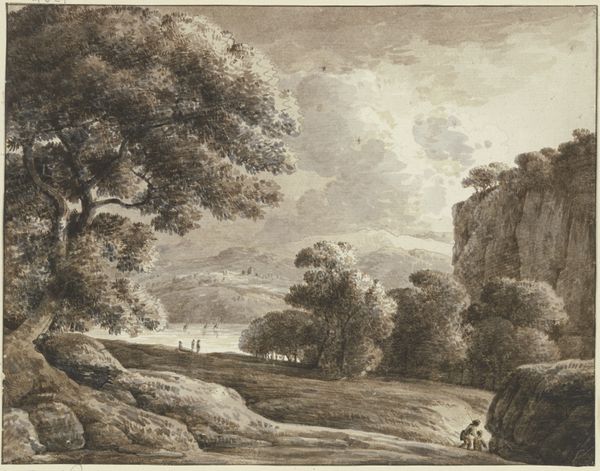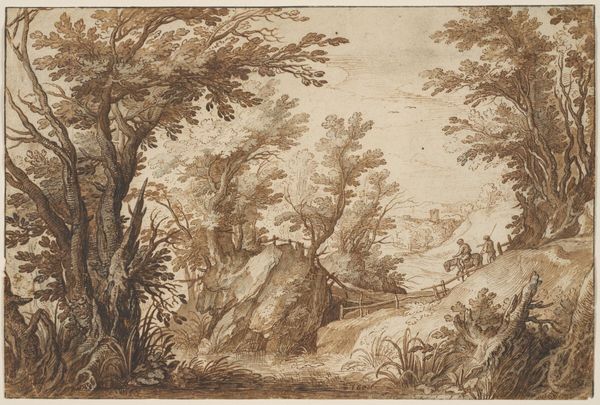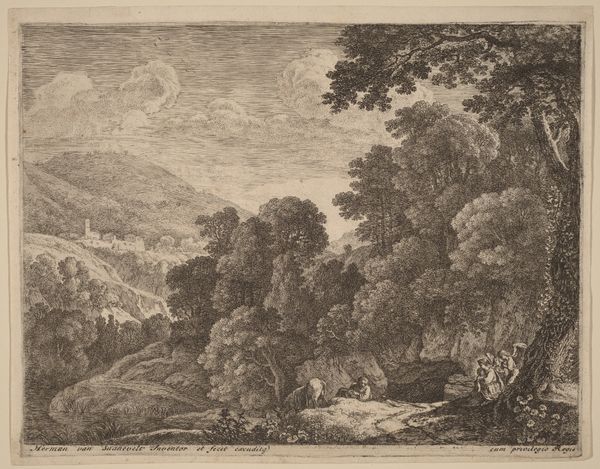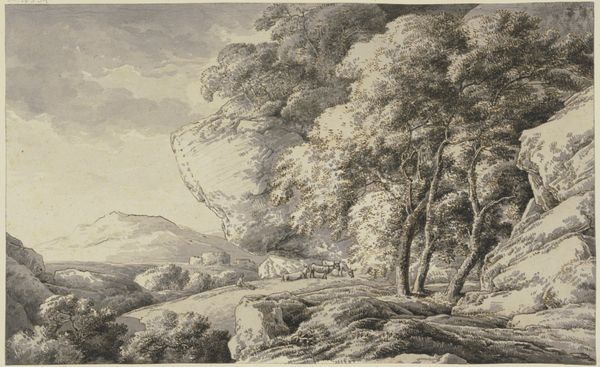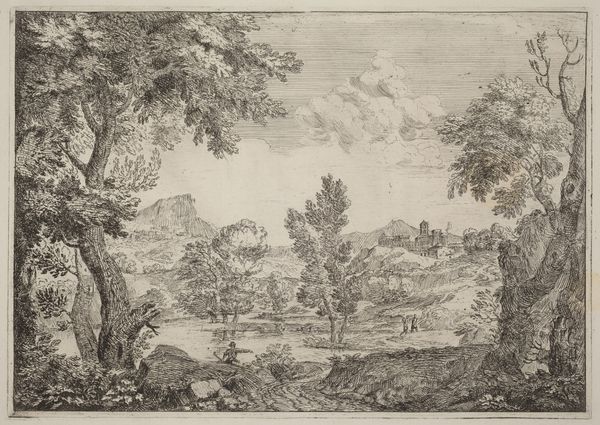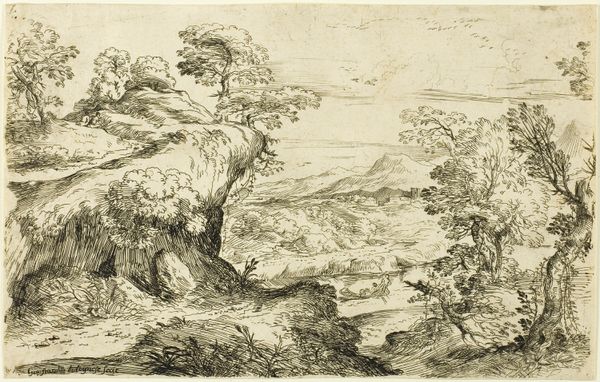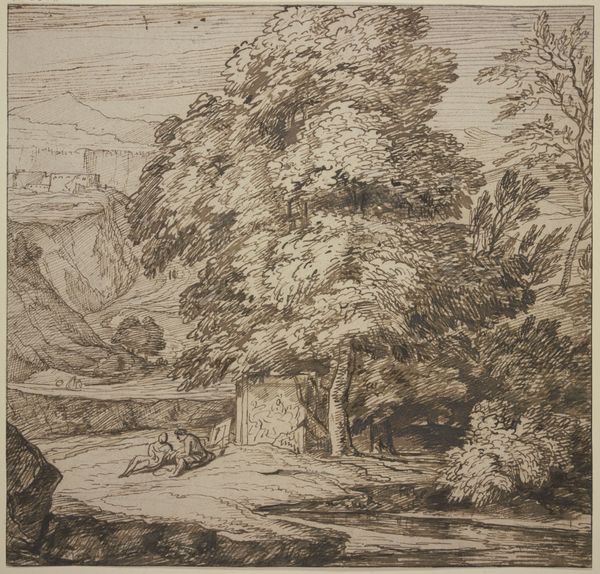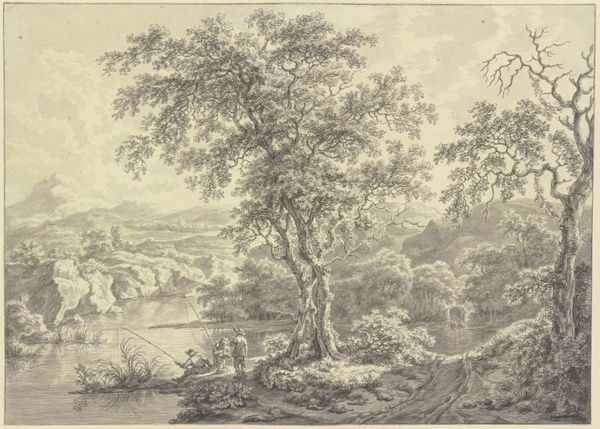
drawing, ink
#
drawing
#
landscape
#
etching
#
ink
#
romanticism
Copyright: Public Domain
Curator: This is Franz Kobell's "Mountain Landscape with Lake," a drawing rendered in ink. It's held here at the Städel Museum. Editor: It has such a calm, contemplative mood. The soft washes of ink give it an ethereal quality. The textures within are wonderfully complex. I would like to know more about it's production. Curator: Kobell was part of a wave of artists captivated by nature, a Romantic sensibility. Considering the art market, landscapes gained significant popularity at this time and were no longer viewed as just a backdrop for historical narratives, or portraiture, but stood alone. This work reflects that. Editor: What I notice immediately is the meticulous use of ink wash, and etching almost suggesting mass production. You see the way the textures of the leaves and the rock are built up with layered marks. How would this piece have functioned socially or institutionally? Curator: Well, Kobell wasn't merely depicting the scene. He aimed to evoke a sense of awe, the sublime. Consider the role of landscape in forging national identity, shaping perceptions, and even reflecting property relations. Its distribution within different classes of patrons will reflect a growing commercialized art market. Editor: Interesting how art's distribution is shaped by class relations, but is also trying to appeal to that Romantic sublime. Curator: Precisely. And if we consider where a drawing like this might be displayed, in a collector's home versus a public institution, it changes how the artwork communicates, and who its meant to impact. Editor: Thinking about those layers and washes makes me ponder about production. Could Kobell have employed assistants in preparing the ink or laying in initial washes? What's visible about the labor process of producing it? I also think about the cost to display this piece of art with the special light it would need. Curator: Your point about labor is well taken. As always there's more going on behind the scenes with production that has lasting impact. Editor: Exactly! Exploring an art work's story beyond aesthetics connects it more directly with life as it is, and as it could be. Thanks.
Comments
No comments
Be the first to comment and join the conversation on the ultimate creative platform.
